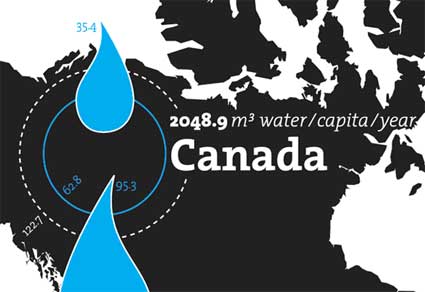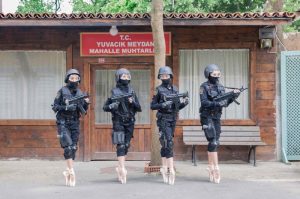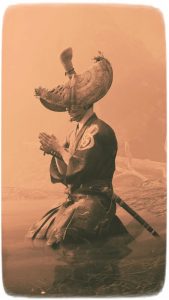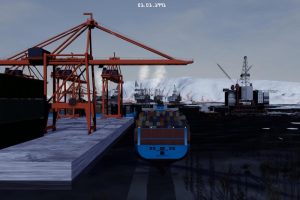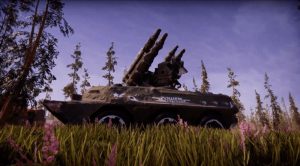Michael Mandiberg and Brooke Singer are two wizards of eco-data visualization.
Eyebeam alum. Brooke Singer is behind Area´s Immediate Reading and the Superfund 365, A Site-A-Day. Superfund 365 is probably my favourite project from 2007. Each day for a year, this online data visualization application visits one toxic site active in the Superfund program run by the U.S. The contaminant, the responsible party and the people involved with or impacted by Superfund are represented in the project.
Michael Mandiberg is a 2007-08 Fellow in the R&D OpenLab and the author of two eye-opening dataviz plug-ins: Oil Standard converts all prices from U.S. Dollars into the equivalent value in barrels of crude oil and Real Costs inserts emissions data into travel related e-commerce websites. Think of it like the nutritional information labeling on the back of food… except for emissions.
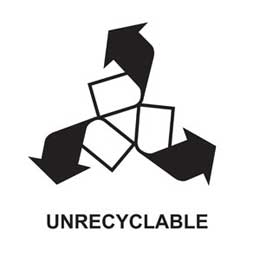 On the left: Grand prize in the Eco-Icons category: Oz Etzioni’s Unrecyclable Icon
On the left: Grand prize in the Eco-Icons category: Oz Etzioni’s Unrecyclable Icon
As members of the Eyebeam Sustainability Research Group (which began in July 2006 as a forum for residents, fellows, and staff to engage in a critical dialog about environmental sustainability) the two of them have launched Eco-Vis Challenge, a competition which was previously mentioned on the blog (Eyebeam’s Ecovisualiz Design Challenge panel, part 1 and part 2).
Based on the idea that being aware of the current environmental crisis doesn’t mean that it is easy to recognize its extent and complexity, the “Eco-Vis Challenge” invited artists and designers to submit projects which make meaningful patterns emerge from the mass of environmental data.
The first challenge asked for new “Eco Icons” that “make visible environmental or ecological concerns”. The second one called for an eco-visualization based on at least one set of the ecological impact data.
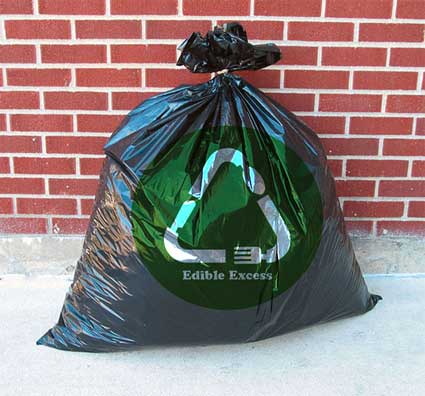 Forays‘ Edible Excess. Honorable Mention in the Eco-Icons category. Courtesy the artist and Eyebeam
Forays‘ Edible Excess. Honorable Mention in the Eco-Icons category. Courtesy the artist and Eyebeam
The winners of the Eco-Vis Challenge have been announced a few weeks ago and their projects are on view at Eyebeam until the end of the week, as a preview for the March 13 – April 19 Feedback exhibition, which will feature the realized proposals alongside work by past and current Eyebeam artists, with others. Both events are part of Eyebeam’s ongoing Beyond Light Bulbs programming series, which grew from the conversations and findings of Eyebeam’s Sustainability Research Group.
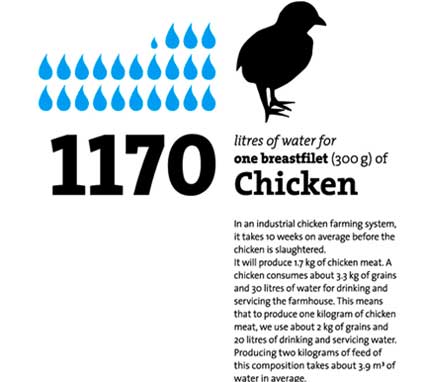 Designer Timm Kekeritz created a poster, visualizing parts of the research data gathered in the research paper Water footprints of nations, to make the issue of virtual water and the water footprint perceptible
Designer Timm Kekeritz created a poster, visualizing parts of the research data gathered in the research paper Water footprints of nations, to make the issue of virtual water and the water footprint perceptible
If you can’t make it to the exhibition, here’s a link to the winning projects and a couple of questions i asked to Michael Mandiberg and Brooke Singer.
The competition is part of Eyebeam‘s ongoing Beyond Light Bulbs programming series, which grew from the conversations and findings of Eyebeam’s Sustainability Research Group. Can you tell me what is the Sustainability Research Group? What is its origin? Its aim?
BROOKE: There were several artists at Eyebeam in 2006 doing work addressing environmental issues and the Sustainability Research Group was at first casual meetings to meet and share research. Initially the group was Ben Engebreth (Person Kyoto), Michael Mandiberg (Real Costs), Jeff Feddersen (Earth Speaker) and myself (Brooke Singer“>Brooke Singer, member of Preemptive Media, AIR) as well as several Eyebeam staffers (Amanda McDonald Crowley, Paul Amitai, Emma Llyod, Liz Slagus). Over time, as new fellows, residents and commissions entered Eyebeam, the group’s membership expanded and we started thinking about events, actions and programming along with keeping up the discussions.
The ECO VIS Challenge was one of the first events we planned as a group and Beyond Light Bulbs is a larger, more ambitious programming series.
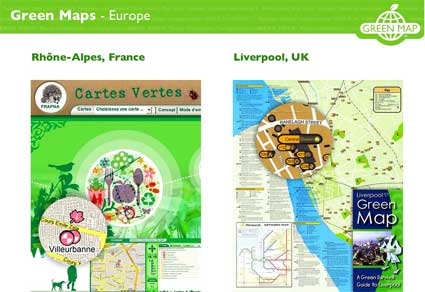 Honorable Mention in the Eco-Icons category: Green Map
Honorable Mention in the Eco-Icons category: Green Map
Eyebeam has put emphasis on sustainability issues recently, is it something you want to pursue in the long run or just another chapter in the series of eyebeam’s commissions and exhibitions?
BROOKE: I think as artists we see what happens, where our interests lead us, and I am not sure what Eyebeam would answer as an institution. But some of our conversations within the group are about how to make the conversation itself “sustainable” and not just a fad. In the US there was a big environmental movement in the 1970s which we all know of as fact but few of us in the group have firsthand memory of it. For instance, President Carter installed solar panels on the White House roof (last week you mentioned an interesting artist project that goes on a hunt for those very panels which were de-installed in 1980) and today there is such a resurgence of interest in solar. But what happened to solar power for those 25 years? I think many of us are highly skeptical of the current hype and media machine around “green.” We are looking for alternative ways to engage ourselves and the public in the important issues of global warming, toxic dumping, public health, air quality — among others.
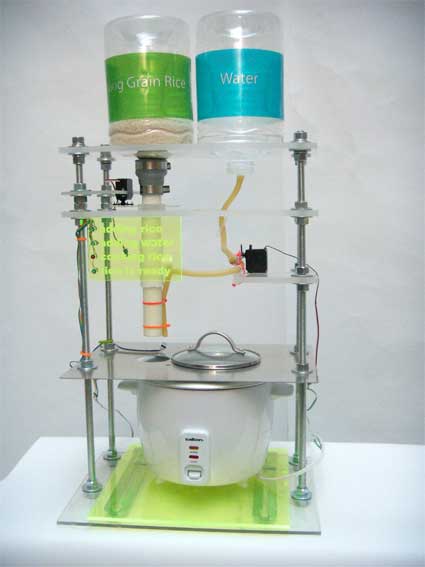 Honorable mention in the Eco-Visualization category, Annina Rüst‘s RiceCooker
Honorable mention in the Eco-Visualization category, Annina Rüst‘s RiceCooker
The exhibition has been running for a few days now, which kind of public visits it? I’m asking because i assume (maybe wrongly) that you probably have visitors who come mostly from the new media art field and i wonder what the impact of the eco-viz challenge can be outside of its usual circle of converted?
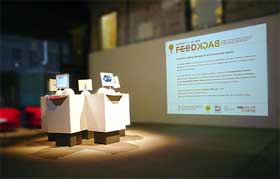 Image: Michael Mandiberg, FEEDBACK preview installation at Eyebeam, 2008
Image: Michael Mandiberg, FEEDBACK preview installation at Eyebeam, 2008
MICHAEL: I see the exhibition from where I work in the R&D Lab, and am fairly frequently speaking with visitors who are lost elsewhere in the building (and trying to find the exhibition.) Two types of people seem to be visiting the exhibition: the Chelsea gallery crawl crowd who come in because Eyebeam is the next space on the South side of 21st past Paula Cooper, and people who have come specifically to see this exhibition (who are more likely to be inside the “circle of the converted.”)
The exhibition is only one part of the overall part of the challenge. When we were conceiving the challenge, we saw the potential for creating an impact at each stage of the process. Just by creating the situation where so many designers and artists created works for the competition, we were able to help direct focus on representations of the many environmental crises. Likewise, we are keen putting these works out into the world (if they were not already.)
Thanks Brooke and Michael!
The projects are on display at Eyebeam until January 26 and will be part of the art and tech center’s upcoming exhibition on sustainable practice: Feedback, March 13 – April 19, 2008.
Images of the entrants to the eco-viz challenge.
Members of the the Sustainability Research Group are currently contributing to Eyebeam’s reBlog website.
Related: Interview with Forays: Geraldine Juárez and Adam Bobbette; Eyebeam’s Ecovisualiz Design Challenge panel (part 1) and (part 2).

